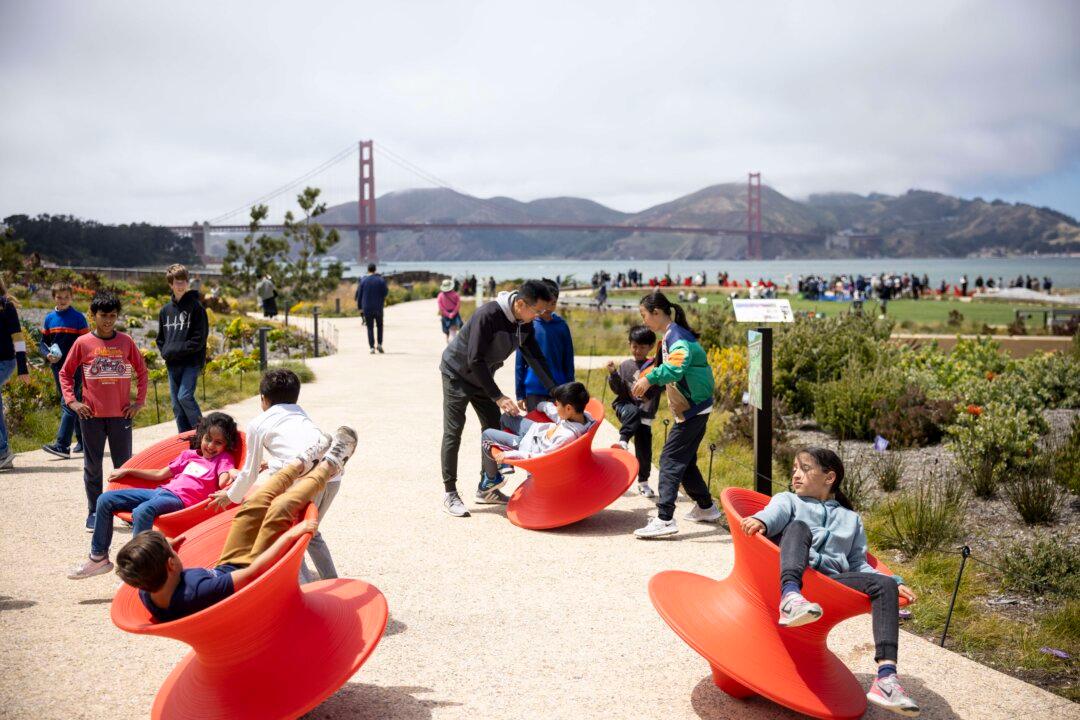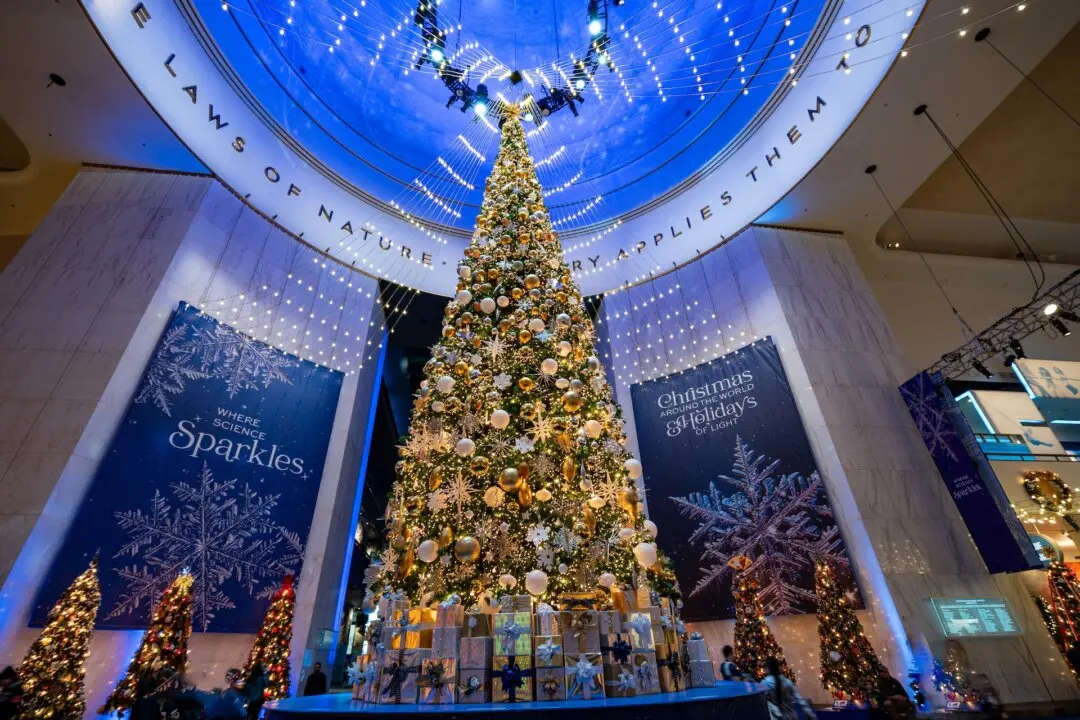Playground or museum? Of course, when you are visiting a new city, you want to show the kids the top cultural attractions.
But there’s also a lot to be said about taking time to explore some local playgrounds. You can connect with local parents who can give you ideas on where to eat and what to do. Your kids can connect with local kids, seeing how kids really are much the same around the world. You can explore what makes the region you are visiting special as playgrounds may be themed—farming, for example, sea life, local history. And you will all get a breather from racing from historic sites to museums.
If you are lucky, you’ll discover playgrounds offering unique experiences and challenges. Take San Francisco. The two-acre Outpost Play Area at the year-old Presidio Tunnel Tops has been designed so kids from age 2 to 12 can challenge themselves at progressively more difficult activities. The Indoor Field Station offers opportunities for art and exploration.
Tunnel Tops represents a 20-year transformation of the Presidio’s waterfront, adding 14 acres to the Golden Gate National Recreation Area. The Presidio, which served as an almost continuously active military garrison for more than 200 years, now is a unique national park site where you can golf, bike, hike, picnic, grab a meal (check out the food trucks at the Tunnel Tops or Colibri Mexican Bistro in the heart of the park!), camp, go to a museum (The Walt Disney Family Museum is here), or stay in a boutique inn that was once home to unmarried officers when it was an Army post.
“The tunneling of a former elevated freeway created an opportunity to solve a problem we’ve faced since becoming a national park in 1994: to create a visible and compelling visitor destination and launch pad for park adventures. San Francisco is a member of a nationwide initiative of cities investing in equitable nature connection for kids growing up in urban areas,” explained Damien Raffa, a senior Parks Experience specialist at the Presidio Trust.
The Outpost has been intentionally designed to challenge kids, building their confidence in the outdoors through the concept of “beneficial risk.” The idea is that the play features increase physical challenge gradually (from east to west) so visitors can select their own level of difficulty.
The space was designed with the help of pediatricians, psychologists, and educators who know that unstructured exploration and play in the natural world improves mental and physical health, fosters connections to the environment, and enhances social skills. The Outpost is the largest of a growing constellation of Nature Exploration Areas in the city.
“Based upon what we’ve observed, the most powerful and engaging experiences for kids (and grown-ups) are a combination of full-bodied, adventurous, and creative play complemented by multi-sensory investigations of real things from the park,” Raffa said. He added that the use of all-natural materials in the playground also serves as a habitat for wildlife.
The day we visited, kids—and parents—were busy crawling through the hydro tunnel (inspired by a historic water supply project from the 19th century). They were climbing up and sliding down the Bluff Slide, designed to mimic the Presidio’s coastal bluffs. Together they were standing and rocking on The Bowline, a large swing made of masts ropes and nets, a bow to San Francisco’s marine heritage.
Kids were crawling inside the Fallen Tree, a reclaimed white oak that was sculpted into three pieces, and then balancing on top. Others were challenging themselves on the Woodland Wall, a large wall of tree trunks with nooks and knots for climbing. The Birds’ Nests has levels with nets meant for climbing and hanging out while The Forest Den, a pile of large logs and giant rope webs, is an exercise in balancing, as well as hiding, maybe pretending to be a forest creature.
There are also activity pods for young children, two art and science-themed areas, and a Builder’s Area where you can build with natural materials from the park. Nearby, the Field Station is filled with objects, artifacts, field specimens, and tools collected from the Presidio. Seasonally changing activities are offered.
Who knew a playground could be so much more than a place to play and run? San Francisco isn’t the only city with innovative playgrounds. The Early Childhood Education Zone shouts out 50 of the best playgrounds in the country.
There are 21 just in New York City’s Central Park, including the Ancient Playground near the Metropolitan Museum with its pyramid-style climbing structures.





